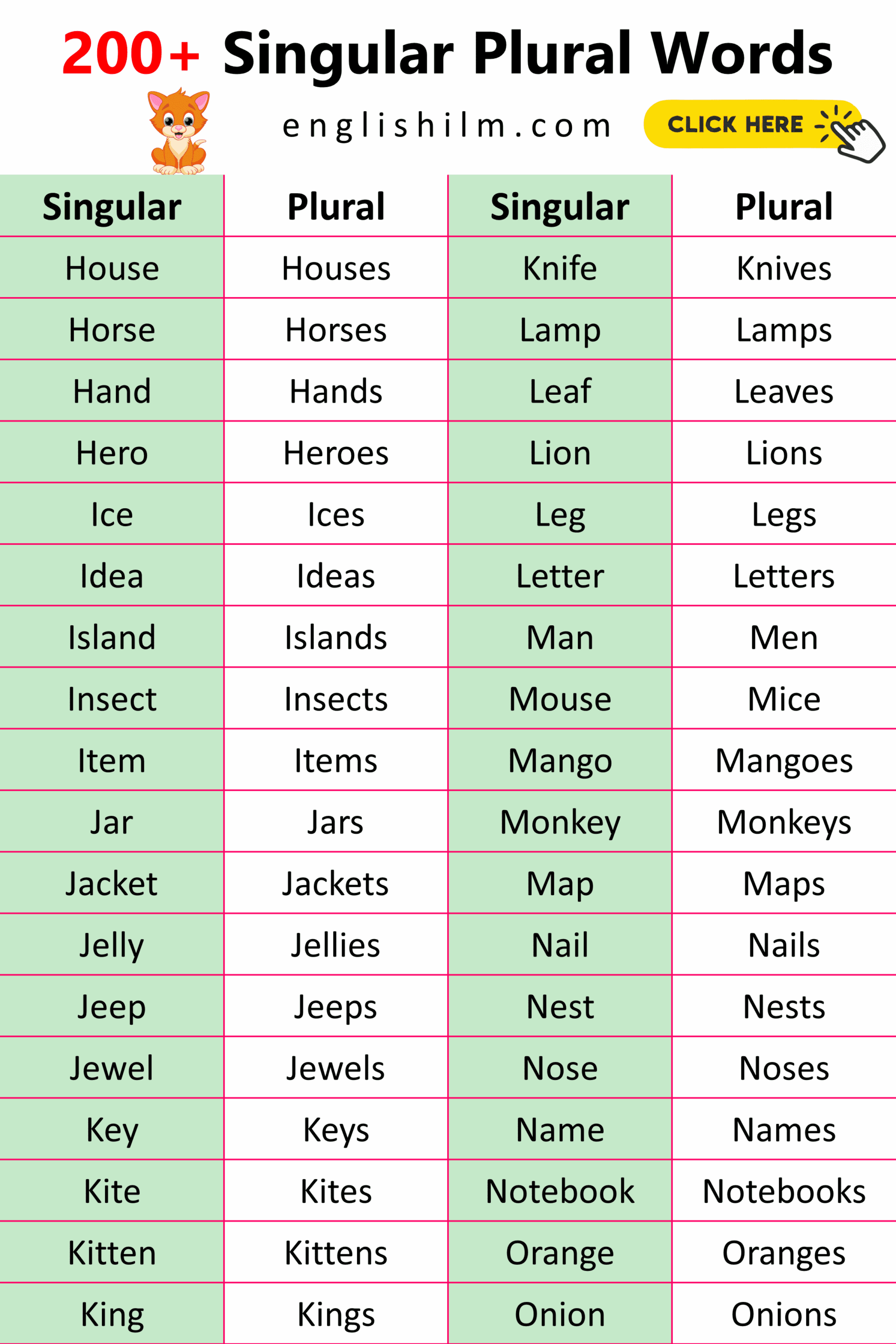Plural nouns are a fundamental part of the English language, representing more than one person, place, or thing. Understanding how to form and use plural nouns is crucial for effective communication. In this article, we will explore some common plural nouns and provide examples to help you master this essential grammar concept.
Whether you’re a student learning English as a second language or a native speaker looking to brush up on your grammar skills, knowing how to correctly form plural nouns is key to clear and concise writing. Let’s dive into some lists of plural nouns to expand your vocabulary and improve your language proficiency.
Lists of Plural Nouns
1. Cats – Examples: The cats in the neighborhood are friendly. I saw three cats playing in the park.
2. Dogs – Examples: She owns two dogs, a Labrador and a Poodle. The dogs barked loudly at the mailman.
3. Houses – Examples: There are many houses for sale in the area. My parents live in a big house with a garden.
4. Books – Examples: I love reading books in my free time. The library has a vast collection of books.
5. Students – Examples: The students are preparing for their final exams. There are over a hundred students in the classroom.
Plural nouns are used in various contexts to describe multiple entities or objects. By familiarizing yourself with common plural nouns and practicing their usage in sentences, you can enhance your language skills and improve your overall communication abilities. Remember to pay attention to the rules for forming plural nouns, such as adding “-s” or “-es” to the singular form.
In conclusion, mastering plural nouns is essential for effective communication in English. By incorporating lists of plural nouns into your vocabulary and practicing their usage in sentences, you can improve your language skills and enhance your writing and speaking abilities. Keep expanding your knowledge of plural nouns to become a more confident and articulate communicator.
